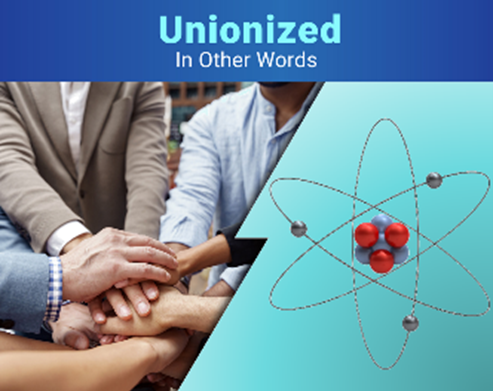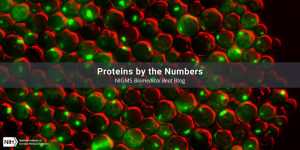Did you know that molecules can be unionized? But it doesn’t mean they form a labor union. In chemistry, unionized (pronounced “un-ionized”) is the opposite of ionized, which means “electrically charged.”

Unionized molecules don’t have electrical charges because they have the same number of electrons and protons. Ionized molecules, also called ions, become charged by gaining or losing electrons. Ions with extra electrons, known as anions, have a negative charge. Ions with fewer electrons than normal, called cations, have a positive charge.
Unionization’s Impacts
A molecule’s charge, or lack thereof, plays a key role in how it interacts inside the body. For example, cell membranes repel charged molecules, but small, unionized molecules, like oxygen, carbon dioxide, and even water, can easily cross them. Similarly, some medicines like general anesthetics are able to get to their site of action by passing through membranes because they’re also small and unionized. Large or charged molecules that can’t simply pass through membranes have to take a more complicated route into cells, using chaperones or channel proteins.
Some molecules will remain unionized whether they’re in an acidic or basic environment, but others can be unionized in one condition and ionized in the other—something researchers must keep in mind as they build new molecules in their search for new medicines. Have you ever tried to dissolve sugar in a cold drink? Table sugar, or sucrose, is an unionized molecule, which makes it more difficult to dissolve. Most sugar substitutes, on the other hand, are ionized, so when you pour them into a cold drink, they quickly dissolve. Similarly, most medicines are ionized in the body so they’re able to dissolve in blood or other bodily fluids and get to the site where they’re needed.
In addition to many unionized molecules, our bodies contain a range of ions, often referred to as electrolytes. These include molecules such as calcium, potassium, and sodium. Electrolytes’ charges allow them to interact with our cells in ways that help regulate the amount of water in our bodies, control the acidity of our blood, and support muscle function—among other roles.

The ability to change the ionization state of a molecule can be important in research. In chemistry, the creation of new molecules often begins by breaking bonds in an unionized molecule, which generates two ionized molecules or atoms. Then, new bonds are formed to create a different unionized molecule. Mass spectrometry—a technique for determining the types of molecules in a substance and their relative amounts—detects ions, so the first step in analyzing a sample is to convert unionized molecules into ionized ones. Mass spectrometry has many uses, including detecting impurities or contaminants, supporting drug discovery, and enabling the diagnosis of diseases based on the amounts of certain molecules in patient samples.
Though it may seem like a small difference, whether a molecule is ionized or unionized can have a huge impact.







